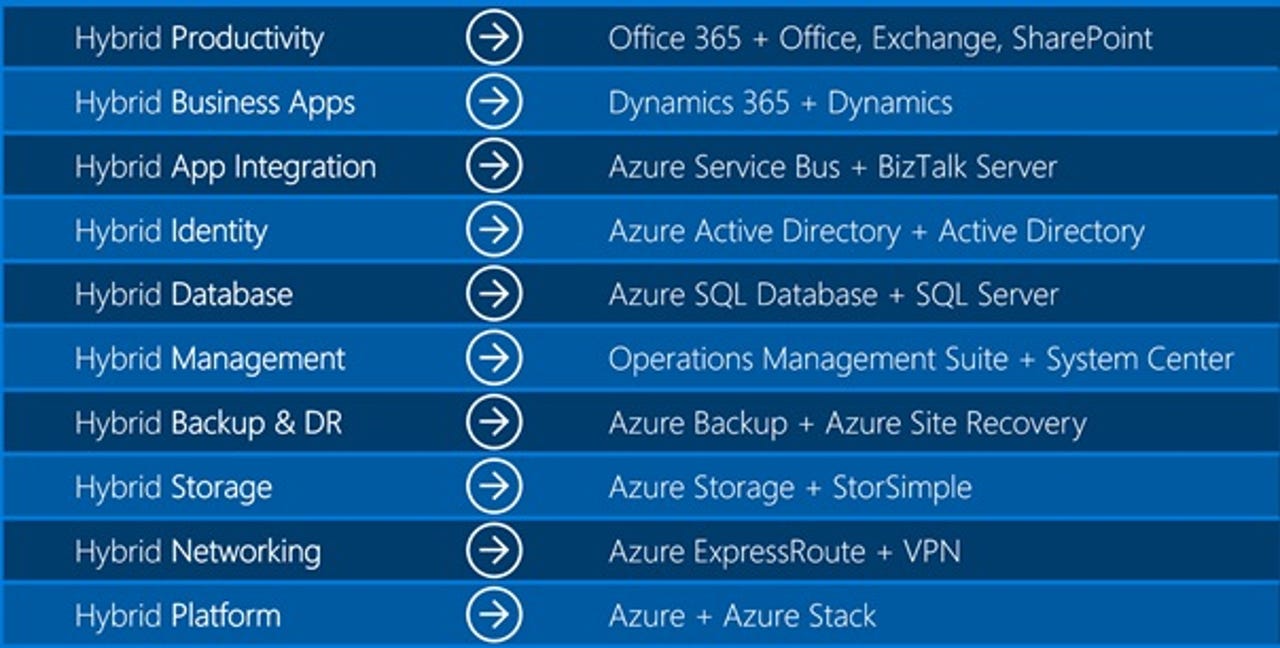Why (and how) Microsoft is circling its hybrid-cloud wagons

If expectations pan out, Amazon and VMware will announce today a tie-up that will give Amazon a hybrid-cloud computing play (at long last).

Perhaps not so coincidentally, Microsoft, which has been touting hybrid computing as a key differentiator for the company for years, is stepping up its hybrid-cloud rhetoric as of late.
For years, Amazon officials referred to private cloud as the "false cloud," claiming that any and every workload should be in the public cloud. For just as long, Microsoft officials have made the case that users should be able to decide which of their workloads belonged on premises, in the public cloud and/or in some type of hybrid configuration.
More than a few Microsoft watchers have insisted that Microsoft's hybrid-cloud messaging has been one of convenience. Because Microsoft still makes and sells lots of on-premises enterprise software -- SharePoint Server, Exchange Server, Windows Server, SQL Server, etc. -- of course Redmond can't advocate that its customers go all cloud, the pundits pundify.
However, many Microsoft customers don't see things that way. Like a number of Amazon's business customers, they don't feel every workload could and should be moved to the cloud and want ways to run some applications entirely or at least partially on-premises.
At its recent Ignite conference, one of the loudest messages from the Microsoft brass was that hybrid means more than simply connecting public cloud to private cloud. (Of the 1446 sessions at Ignite, close to 500 of them touched, if not focused on, hybrid-cloud topics.)
Hybrid, according to Microsoft's ever-evolving definition, involves sharing application programming interfaces, user interface elements, and various technologies across its computing stacks.
As Microsoft's hybrid offerings diagram embedded in this post above (from a company blog post from October 12) indicates, Microsoft has on-premises complements to its cloud services all the way up and down the stack. Microsoft is advocating users deploy and use both, i.e., both Azure and Azure Stack; Dynamics 365 and Dynamics on-premises; Office 365 and Office on-premises; Exchange; and SharePoint. In some cases, Microsoft is encouraging this with offers like the Azure Hybrid Use Benefit and the recent offer to purchase System Center in conjunction with Operations Management Suite.
The on-premises complement to each cloud service will not offer as robust or up-to-date sets of features, but the company's goal is to keep the pairs aligned to the extent possible. Microsoft is planning to continue to develop and release more versions of on-premises SharePoint Server, Windows Server, and other variants of its on-premises enterprise software, officials have said. (Exactly how many more and for how much longer, I don't know.)
All this hybrid talk aside, make no mistake that Microsoft is continuing to try to get more users on Azure.
Just yesterday, Microsoft announced Azure Active Directory Domain Services hit general availability. The idea of Azure AD Domain Services -- which provides managed domain services like domain join, group policy, LDAP and Kerberos/NTLM authentication that are fully compatible with Windows Server Active Directory -- is to help customers "lift-and-shift" their on-premises apps to Azure.